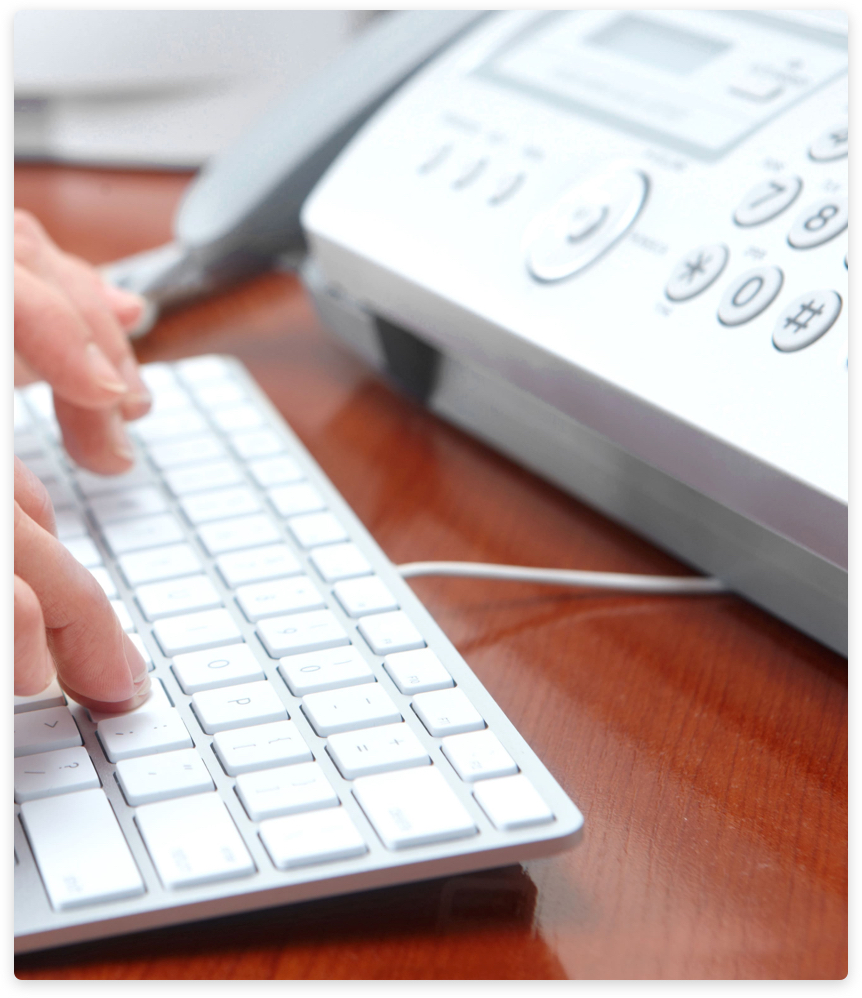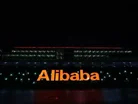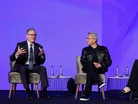In modern business communications, email-to-fax and fax-to-email bridge traditional faxing with the ubiquity of email, delivering faster, more flexible workflows. This guide thoroughly reimagines how these processes work, their practical benefits, and how a solution like GFI FaxMaker Online enables seamless sending and receiving of faxes through standard email. It covers end-to-end steps, security considerations, and real-world integration with business systems, while keeping a clear focus on how to implement and optimize these workflows in a corporate environment.
How does email to fax work?
Email to fax represents a bridge between everyday email usage and the traditional, document-based world of faxing. The core idea is simple: users compose an email in their familiar client, attach the documents they need faxed, and send the message to a special address that a fax service recognizes as a fax submission. The service then converts the email and its attachments into a standard fax format, delivers the fax over the phone network to the intended recipient, and returns a transmission report to the sender indicating success or failure. This seamless conversion eliminates the need for manual printing and physical faxing, enabling faster transmission, easier tracking, and tighter integration with digital workflows.
At a high level, the email-to-fax bridge is composed of several key components. First is the user’s email client, where the sender creates a new message, writes a subject line and body, and attaches the documents to be faxed. Second is the fax gateway or fax service, which is responsible for translating the email content into a fax-compatible data stream and orchestrating the dispatch across the telephone network. Third is the recipient’s fax equipment or fax server, which receives the transmitted pages and delivers them to the intended destination. Finally, the system provides feedback to the sender, typically in the form of a transmission report or notification email that confirms delivery or explains why a transmission failed, often with guidance on retrying.
From the end user’s perspective, the process is straightforward and doesn’t require learning a new workflow. A user opens a new email, addresses it to a fax destination, adds a subject line and any descriptive information in the body, attaches files to be faxed, and clicks send. The fax service then takes over: it reads the recipient’s fax number from the address, converts the email body and subject into a cover page or part of the fax’s metadata, and appends any attachments as part of the fax content. In many electronic fax solutions, the subject line and the email body appear on the fax cover page, enabling the sender to communicate essential context to the recipient without manually composing a separate cover page each time. This dynamic approach to cover pages makes it possible to reuse templates and add instructions without extra effort.
In practice, the email-to-fax workflow typically involves these recurring steps. Start by opening a new email and entering the recipient’s fax number and the appropriate domain or specialized address (for example, a domain-based fax address or a provider-specific endpoint). Next, create a descriptive subject line and craft the message body, which will be captured as part of the cover page content. Attach the documents you wish to fax; common formats include PDFs, Microsoft Office documents, image files, and other widely supported formats. Send the email; the fax service ingests the email content and converts it into a fax transmission. The system then calls the recipient’s fax number and transmits the pages over the public switched telephone network (PSTN) or an IP-based fax transport, depending on the provider’s architecture and the listener’s capabilities. After the transmission completes, the fax service typically returns a confirmation email to the sender, detailing whether the fax was successfully transmitted, failed to transmit, or encountered an error that requires retrying.
Because many organizations rely on multiple applications and workflows, email-to-fax solutions are designed to integrate with third-party systems. For example, an enterprise resource planning (ERP) system, an invoicing platform, or a legacy billing engine can be configured to generate and route documents to a fax destination automatically. Depending on the vendor, this integration may be configured by IT administrators through built-in rules and connectors, or may require some level of customization by the software vendor. Regardless of the deployment model, the objective remains the same: translate electronic documents into a fax transmission that preserves intent, preserves important metadata from the email (such as sender identity and subject), and delivers a reliable, auditable result.
A few practical details matter for successful email-to-fax deployments. Most electronic fax solutions require you to specify the recipient’s fax number in the To field (sometimes in a specialized format such as faxnumber@domain). The To address is interpreted by the fax gateway, which extracts the number and routes the transmission accordingly. There is often a limit on attachment size or total payload, so large documents may need to be split into multiple faxes or converted to more compact formats. International dialing conventions are typically enforced, meaning the fax number must include the appropriate country code and, in many cases, a leading plus sign (+) to indicate international dialing. Some systems also impose limits on the total size of the email (including body, subject, and attachments). In addition, the sender is usually required to be a registered user within the fax system, ensuring traceability and compliance with use policies. After the transmission process, receive a status update that indicates success or failure, often with a reason and recommended next steps if the fax did not go through.
Cover pages are an important element of the email-to-fax experience. Instead of manually generating a cover page for every fax, many solutions automatically populate a cover page with the sender’s name, recipient’s details, and the email’s subject and body content. This enables consistent, professional presentation and reduces the manual effort required to prepare cover pages. Some solutions also support templates that can adapt to different recipient groups, departments, or contexts, providing dynamic fields that pull in information from the email or from the user profile. In scenarios where compliance or audit requirements are strict, having a consistent cover page, request notes, and a clear transmission record on file is essential for accountability.
The electronic fax service converts email content into a fax format, negotiates with the receiving fax machine or fax server, and handles delivery across the phone network. The service’s delivery mechanism often includes robust transmission reporting, which notifies the sender about the outcome. If the fax fails to transmit, the report will typically offer the reason for failure and, in many cases, an option to retry automatically or manually. For organizations looking to maximize uptime, these electronic fax solutions provide predictable, auditable, and repeatable outcomes, with minimal manual intervention required.
Beyond simple sending, email-to-fax workflows can be designed to integrate with other business processes. For instance, a company could configure an ERP system to trigger an email-to-fax submission when a contract is generated or when an invoice needs to be delivered to a client who still relies on fax-based processes. Some providers offer API capabilities that enable automated fax sending and status tracking, letting software systems initiate faxes without human intervention. In practice, this means organizations can achieve end-to-end automation, reduce manual steps, lower the risk of human error, and streamline workflows across departments while maintaining an auditable trail of activity.
In summary, the typical steps for emailing to a fax, when implemented with a capable electronic fax solution, are straightforward and familiar to most users. Open a new email, enter the recipient’s fax destination, create a clear subject line and body, attach the documents, and send. The fax service converts the email data into a fax, delivers the transmission over the telephone network to the recipient, and returns a transmission report to confirm success or explain failure. The process also supports integration with business applications, enabling IT teams to automate and coordinate faxing activities with other enterprise systems. This combination of simplicity, reliability, and integration potential makes email-to-fax a practical solution for a wide range of organizations and use cases.
How does fax to email work?
Fax to email represents the counterpart to email-to-fax, providing the convenience of email delivery for inbound faxes received through traditional fax machines, fax servers, or online fax services. The core idea is to route incoming fax data through a gateway that converts the received pages into widely usable electronic formats (such as PDF or TIFF) and then delivers them to one or more email inboxes. This approach preserves the content of the fax while eliminating the need for manual handling, physical storage, or printing. It also enables faster distribution of information and tighter integration with digital workflows and document management systems.
The implementation of fax-to-email solutions typically supports several routing options for inbound faxes. A simple, low-friction setup may deliver all received faxes to a single designated mailbox for manual distribution. More advanced configurations enable dynamic routing, where each user or department is assigned a unique fax number and all inbound faxes targeted to that number are automatically delivered to the corresponding mailbox or integrated into the user’s workflow. Dynamic routing improves efficiency by ensuring that the right person receives the fax without requiring manual forwarding or distribution.
The security and compliance implications of fax-to-email workflows are important considerations. In many industries—especially healthcare, legal, and insurance—protecting sensitive information is critical. Fax-to-email systems can improve security by implementing access controls, encryption of data both in transit and at rest, and robust audit trails that show who accessed or received a document and when. The ability to route faxes directly into a secure and appropriately restricted mailbox reduces the risk of sensitive data being physically observed or misdelivered. Additionally, inbound routing rules can enforce business policies, such as restricting certain types of documents to specific recipients or requiring authentication before a fax is opened.
From the end-user perspective, fax-to-email offers meaningful efficiency gains. Inbound faxes arrive as email messages with the fax content converted into a PDF or TIFF attachment, often accompanied by a concise fax report. The recipient can view, QA, store, or forward the document without needing to locate a physical fax machine or print pages. This electronic format makes it easier to incorporate the fax into existing document management systems, to run automated indexing and archiving, and to integrate with workflows that require electronic approval or sign-off. The ability to retain faxes in digital format makes search and retrieval faster and more reliable.
The most common inbound fax-to-email workflow can be described in a sequence of steps. A sender places a fax or uses a fax-capable device to transmit a document to a dedicated fax number. The fax service or gateway answers the line and receives the fax data. The service stores the raw fax data for auditing and logging purposes and then converts the content into a portable electronic format, typically PDF or TIFF. The converted file is then delivered to the designated recipient’s email address, or to a distribution list, depending on the routing rules configured by the organization. Along with the file, the recipient typically receives a fax report that summarizes transmission details, including time stamps, sender information, page counts, and any errors encountered during processing. This report provides a clear record for the sender and the recipient, supporting accountability and traceability.
In more sophisticated configurations, inbound faxes can be integrated with business systems via APIs or connectors. This means that instead of simply receiving an email, the fax content can be automatically ingested into a document management system, fed into an indexing workflow, or routed to specific business processes such as case management, contract approval, or verification steps. The API-enabled approach enables organizations to automate responses, trigger notifications to relevant stakeholders, and ensure that every received fax contributes to a defined business process. It also helps maintain an auditable trail that aligns with compliance requirements and internal governance.
A key advantage of fax-to-email, compared with a traditional fax room workflow, is the ability to centralize and standardize the distribution of inbound documents. Instead of printing everything for manual distribution or physical file handling, employees can access faxes directly in their email client or campus-approved document repository. The inbound routing model—whether simple or dynamic—also supports better control over sensitive information. For example, the same incoming document can be routed to different recipients or groups based on the fax number, departmental rules, or even content-derived metadata, ensuring that only authorized individuals view the data.
While specific features vary by vendor and deployment model (online service, on-premises network fax server, or hybrid configurations), the fundamental principle of fax-to-email remains consistent: convert inbound fax pages into electronic formats and deliver them via email or integrated workflow channels. This approach preserves the fidelity of the original fax content, enhances accessibility for users who rely on digital workflows, and simplifies storage, search, and compliance-related tasks. By combining reliable conversion, secure transmission, and flexible routing, fax-to-email provides a practical and scalable solution for modern organizations seeking to modernize their faxing while maintaining the reliability of traditional fax communications.
Benefits to using email to fax and fax to email
Email to fax and fax to email deliver a set of interconnected advantages that address common business needs around efficiency, security, cost, and compliance. Historically, standalone fax machines dominated business communication channels, but the pace of digital transformation has made integrated electronic faxing an increasingly attractive option. Email to fax emphasizes the ease and speed of sending faxes from familiar email clients, while fax to email emphasizes the convenience and reach of receiving faxes directly in digital inboxes. Together, they form a cohesive approach to faxing that aligns with modern workflows, improves productivity, and supports robust record-keeping and compliance.
One of the enduring advantages of email to fax is the elimination of the manual steps associated with traditional faxing. With a simple email, users can send documents to any fax number without printing, scanning, or physical handling. This not only reduces material costs but also speeds up transmission times, enabling faster decision cycles and more responsive client interactions. The learning curve is minimal because most users already know how to compose and send email messages, which translates into a rapid adoption across teams. In addition, the ability to attach multiple documents to a single email allows for consolidated communications, reducing the number of separate faxes that would otherwise be required for a multi-document package.
From an organizational perspective, electronic faxing supports broader digital workflows. Faxes can be integrated with ERP, invoicing, inventory, and accounting systems, enabling automated document routing and archival within business processes. This integration reduces manual data entry and re-keying of information, which are common sources of errors and delays. Moreover, many electronic fax solutions offer APIs and connectors that enable IT teams to configure seamless end-to-end automation. In practice, this means a single system can trigger a fax submission whenever a business event occurs, such as the creation of a purchase order or the generation of a billing notice, ensuring timely communication with clients and partners.
Security and compliance considerations are central to the decision to adopt email-to-fax and fax-to-email workflows. While email offers convenience, it does not inherently guarantee the same level of security and auditability as faxing, particularly for regulated data. Therefore, electronic faxing solutions incorporate a range of protective features. These often include encryption for data in transit and at rest, secure user authentication, access controls, comprehensive audit trails, and the ability to enforce retention policies. Fax-bearing information can be more suitable for certain regulated contexts, where the legal requirements for data handling, integrity, and non-repudiation are strict. That said, no technology is a universal security solution; organizations must implement complementary controls, such as secure email practices, trusted networks, and governance policies, to achieve an overall compliance posture.
The scale and life-cycle of fax devices have a substantial cost impact. Traditional fax machines require hardware investment, ongoing maintenance, toner, paper, and dedicated phone lines. In contrast, email-to-fax and fax-to-email reduce or remove many of these expenses. For many organizations, the total cost of ownership decreases as the need for physical devices declines and as digital document handling becomes more efficient. While the exact savings depend on the organization’s size, fax volume, and existing infrastructure, the return on investment (ROI) is often realized quickly through labor savings, faster turnaround times, and improved document management.
Adoption of electronic faxing also supports sustainability goals. Without the need to print faxes for distribution, paper usage drops, and energy consumption associated with running multiple fax machines decreases. The environmental benefits, while secondary to the primary business outcomes, can be a meaningful factor for organizations pursuing green initiatives and responsible procurement practices.
From a governance perspective, fax-to-email systems enable precise control over who can view sensitive documents and when. Inbound routing rules can ensure that only designated recipients receive particular faxes, reducing the likelihood of misdelivery. The availability of digital copies with metadata—such as sender identity, timestamps, and page counts—facilitates audit readiness, compliance reporting, and legal eDiscovery. These capabilities are particularly valuable in regulated industries where traceability and record integrity are critical.
Industry-wide, the proliferation of fax remains substantial. It is estimated that there are around 125 million fax machines in use globally, with roughly six million new units purchased each year. These figures illustrate the persistent demand for fax-based communications in certain sectors and geographies. A 2012 survey reported that approximately 85 percent of U.S. businesses use fax in some form, highlighting the ongoing relevance of fax in the corporate landscape. The reasons for continued reliance include the straightforward setup for small operations, compliance requirements in healthcare, legal, and insurance, and the presence of legacy applications that still rely on fax transmission for data exchange and archival purposes.
Three primary drivers help explain why fax remains important in many organizations:
-
Ease of initial setup: For small companies, obtaining a dedicated line and a fax machine remains one of the simplest ways to establish external communications with minimal technical overhead.
-
Compliance-driven transmission: In industries with strict regulatory requirements, fax is still favored because it can offer stronger assurances around document integrity, non-repudiation, and controlled routing than some other channels.
-
Legacy system compatibility: Many organizations operate legacy purchasing, billing, or workflow systems that generate documents that are most easily transmitted via fax, ensuring compatibility across the enterprise without extensive software overhauls.
The net effect is that a well-implemented integrated network faxing solution can deliver substantial gains in efficiency, productivity, and security. With the right setup, the organization can realize significant cost savings in labor, reduce handling steps for documents, and present a more professional image in business communications. By leveraging existing office productivity tools—word processors, spreadsheets, and mail clients—an integrated network fax solution enables a smoother transition from legacy processes to modern digital workflows, delivering fast return on investment with a short learning curve.
EXAMPLE
How to send an email to a fax using GFI FaxMaker online
GFI FaxMaker Online stands out as a popular integrated faxing solution that operates as an internet fax service with no installation required. It provides many of the same benefits as other faxing solutions, notably the elimination of expensive fax hardware, software, or complex phone systems. There is no need to purchase paper or toner, or to manage dedicated telephony infrastructure. With GFI FaxMaker Online, users can send faxes directly from their email client by composing a straightforward email that includes several key elements: a subject line, the email body, any attachments, and the fax recipient information. The attachments are incorporated into the fax content by the service.
To fax a recipient, the user places the recipient’s fax number into the To field in the email, and then formats the address as: faxnumber@gfifax.com. The term faxnumber should be replaced with the full recipient’s fax number. The system supports sending to multiple recipients by including up to two hundred recipient numbers in the To field, separated by semicolons. Each recipient must use the same format, faxnumber@gfifax.com, to ensure proper routing. It is important to note that the fax number must always include the international dialing symbol “+” as well as the country and area codes, even when sending faxes locally. For example, a local New York fax to a New York recipient would still require the +1 country code and the appropriate area code.
GFI FaxMaker Online accepts emails with attachments totaling up to 20MB, including the content of the email and the attachments. The service provides a clear cap to prevent oversized transmissions, and users need to be mindful of their mail server constraints, as some mail systems enforce lower caps (e.g., 15MB). Before sending, the sender must be configured as a user within the GFI FaxMaker Online account; users who are not registered in the system cannot initiate faxes. After sending, the sender receives a transmission report that confirms whether the fax was transmitted successfully or if there were issues that prevented delivery. This feedback is critical for confirming delivery and initiating retries if necessary.
When preparing your fax message, it is recommended to consider the following practices. Keep the subject and body concise but informative so that the cover page delivered with the fax is meaningful to the recipient. Use clear file formats for attachments (PDF is widely supported and preserves formatting). Verify recipient numbers and ensure they are current and correct. If sending to a large number of recipients, group them logically into separate messages to avoid parsing errors and to simplify failure handling. Always respect the recipient’s preferences and compliance requirements, especially for sensitive documents, by applying appropriate routing controls and access restrictions.
Important notes for sending faxes with GFI FaxMaker Online include the following: the To field must include the recipient’s fax address, which typically means the recipient’s fax number followed by the domain (faxnumber@gfifax.com). The system’s format supports up to 200 recipient numbers per message, enabling large broadcast-style transmissions when needed. While the platform provides convenience, it is still essential to manage recipient lists with care to avoid sending confidential information to unintended parties. A crucial practice is to confirm the recipient information and the content’s sensitivity before dispatching, and to leverage any available templates and routing rules to maintain consistency and compliance.
After sending, you will receive a transmission status notification via the service’s reporting mechanism. This allows you to track delivery, identify failures, and take corrective action if necessary. For deeper, more technical guidance on sending faxes, the platform’s Getting Started guide offers comprehensive instructions and best practices to optimize results for your specific environment.
EXAMPLE
How to receive a fax from email using GFI FaxMaker online
GFI FaxMaker Online also supports receiving faxes through the same internet-based service. A user who has a dedicated fax number configured within GFI FaxMaker Online can receive faxes, and by default, those received faxes are forwarded to the user via email. This behavior is designed to align with the needs of modern digital workflows, enabling prompt and convenient distribution of incoming documents. In many configurations, third-party applications can be configured to download emails directly from the GFI FaxMaker Online servers via an application programming interface (API). This capability is particularly useful for organizations that want to automate the ingestion of fax content into their document management systems or bespoke workflows.
When a fax arrives, GFI FaxMaker Online converts the fax into a configurable format, such as a PDF, which is well-suited for viewing, archiving, and editing. The conversion ensures that the received document is stored in a universally accessible electronic format, facilitating downstream processing. The specific delivery method for the incoming fax depends on the number or mailbox associated with the receive route. In practice, the fax is transmitted as an email to the recipient’s designated address, with the fax file attached and an accompanying fax report. The content of the email, the recipient address, and the report provide a clear, auditable trail of inbound activity. For more granular control, administrators can adjust user and routing settings to determine how incoming faxes are distributed, whether to multiple recipients or to specific application endpoints via API.
The user faxing settings within GFI FaxMaker Online govern how inbound faxes are handled and delivered. These settings can specify routing rules, preferred file formats, and notification preferences when a fax is received. The system can also be configured to deliver faxes to multiple recipients or to a centralized mailbox for triage. Documentation and support resources provide detailed guidance on configuring these inbound workflows and ensuring that the delivery aligns with organizational policies for privacy and data handling. When a fax is received into the system, the resulting email includes the fax attachment and a report detailing the transmission metadata, successful delivery indicators, and any anomalies detected during the processing. This transparency supports accountability and makes it easier for teams to monitor inbound fax activity.
In summary, fax-to-email workflows complement email-to-fax capabilities by delivering a complete, end-to-end electronic fax experience. They enable organizations to receive faxes directly in digital inboxes, integrate them into business processes, and leverage API-driven automation to connect fax content with document management systems, ERP modules, and other enterprise applications. Whether inbound delivery is routed to a single inbox, multiple recipients, or integrated with automation pipelines, fax-to-email provides a practical, scalable solution that aligns with the expectations of modern organizations seeking efficiency, security, and compliance in their communications.
Conclusion
Email to fax and fax to email represent a robust convergence of traditional faxing with modern digital workflows. By allowing users to send faxes directly from familiar email clients and receive faxes as secure electronic documents in their inboxes, these solutions unlock faster document delivery, improved traceability, and deeper integration with business processes. The practical steps for sending a fax via email are simple, while the system handles conversion, routing, security, and feedback through automated transmission reports. The ability to route inbound faxes dynamically, deliver them to the right recipients, and integrate with APIs and workflows further enhances organizational efficiency, governance, and compliance.
As organizations navigate regulatory requirements and the need to protect sensitive information, electronic faxing emerges as a flexible, scalable option that complements or even replaces traditional fax setups. The combination of improved user experience, reduced operational costs, stronger audit trails, and easier integration with ERP, invoicing, and other enterprise systems makes email to fax and fax to email a compelling choice for many industries. By adopting solutions like GFI FaxMaker Online, businesses can realize the benefits of modern digital faxing without sacrificing the reliability, legal defensibility, or professional presentation that faxing historically provided. This approach supports faster decision-making, stronger document governance, and a more streamlined path toward a fully integrated, paper-reduced communications ecosystem.





